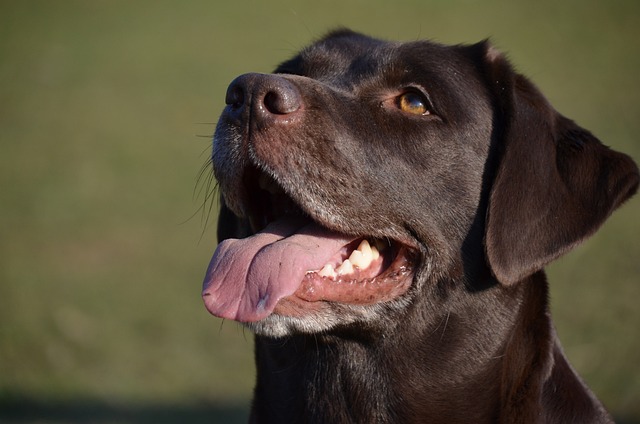
Should I let my puppy drink water all day
You’ve just brought home a tiny, wriggling ball of fur, and every day is a new adventure. But as you watch your puppy dart from toy to toy, then gulp down water like it’s going out of style
Seeing your young dog limp after playtime can be truly unsettling. We often associate arthritis with grey muzzles and slower steps, but the reality is far more complex. Arthritis, simply put, is inflammation within the joints, causing pain and stiffness. While age is a significant factor, it's a misconception to think it's exclusively an old dog's problem. Puppies and young dogs can absolutely develop this painful condition, and recognizing it early is paramount for their long-term comfort and mobility. Ignoring those subtle signs in a seemingly sprightly young dog can lead to unnecessary suffering down the line.
So, what triggers arthritis in dogs who should be bouncing with youthful energy? Genetics play a surprisingly powerful role. Certain breeds, like German Shepherds, Labrador Retrievers, and Rottweilers, inherit a predisposition to developmental joint diseases. Hip dysplasia, where the hip joint doesn't form correctly, and elbow dysplasia are classic examples. These malformations cause abnormal wear and tear, accelerating cartilage breakdown and inflammation long before old age sets in. Traumatic injuries are another major culprit. A seemingly minor fall, a rough play session gone wrong, or even repetitive stress from intense exercise can damage joint structures like ligaments, tendons, or the cartilage itself, setting the stage for early osteoarthritis. Don't underestimate that limp after a weekend hike; it warrants attention.
Beyond genes and accidents, how we raise our young companions significantly impacts their joint health. One of the biggest controllable factors is weight. Carrying excess pounds puts immense, constant strain on developing joints, dramatically increasing inflammation and cartilage damage. It’s a heavy burden for growing bones. Nutrition is equally critical. Puppies fed diets inappropriate for their breed size or growth stage, lacking essential nutrients like glucosamine, chondroitin, omega-3 fatty acids, or having imbalanced calcium-to-phosphorus ratios, may not develop optimal bone and cartilage strength. Think of it as building a house with subpar materials. Exercise, while vital, needs careful management. Over-exercising young dogs, especially on hard surfaces, or forcing high-impact activities like excessive jumping before their growth plates close, is a recipe for joint damage. Conversely, insufficient exercise leads to weak supporting muscles, offering poor joint stability. Even seemingly minor environmental factors, like puppies frequently slipping on slick floors, can contribute to micro-injuries over time.
Spotting arthritis in a young dog requires keen observation, as they’re masters at masking discomfort. You won't typically see the pronounced stiffness of an older dog first thing in the morning. Instead, watch for subtler shifts. Does your energetic pup suddenly hesitate before jumping into the car or onto the couch? Do they lag behind on walks they used to lead, or tire more easily? You might notice stiffness after resting, or a slight limp that comes and goes, often worse after activity. Behavioral changes are telling signs too. A dog that once loved play might become withdrawn, irritable, or even snap when touched near a sore joint. Licking or chewing persistently at a specific leg or joint is a clear signal of localized pain. They might struggle to find a comfortable position to sleep or show reluctance to use stairs. Pay attention to these whispers of pain; they’re your dog’s way of asking for help.
The good news? Proactive steps can significantly reduce the risk or slow the progression of arthritis in young dogs. Maintaining an ideal body condition score is non-negotiable. Consult your vet about the perfect weight for your dog’s breed and age, and stick to it religiously – every extra pound matters. Feed a high-quality, balanced diet specifically formulated for your dog’s life stage and breed size. Look for foods containing joint-supporting nutrients or discuss targeted supplements with your veterinarian; they can recommend safe, effective options. Exercise is crucial, but it must be controlled. Focus on low-impact activities like controlled leash walks, swimming, or gentle play on soft grass. Avoid repetitive high-impact games like excessive ball chasing or frisbee. Build duration and intensity gradually as your dog matures, allowing their joints to strengthen safely. Providing secure footing at home with rugs or mats can prevent slips. Crucially, schedule regular veterinary check-ups. Early detection through physical exams or, if indicated, imaging like X-rays, allows for timely intervention. Your vet is your partner in crafting a personalized prevention and management plan.
Understanding that arthritis isn't confined to senior dogs empowers you to be a vigilant advocate for your young companion's joint health. Genetics and injuries are factors, but the lifestyle choices we make – managing their weight meticulously, providing optimal nutrition, ensuring appropriate exercise, and fostering a safe environment – hold immense power. By tuning into those subtle early signs of arthritis in dogs and partnering closely with your veterinarian, you can intervene effectively. Early action isn't just about managing pain today; it's about preserving their joyful leaps, enthusiastic runs, and overall quality of life for all the years ahead. You have the tools to make a profound difference in your young dog’s mobility and happiness.

You’ve just brought home a tiny, wriggling ball of fur, and every day is a new adventure. But as you watch your puppy dart from toy to toy, then gulp down water like it’s going out of style

Picture this: You’re baking cookies in your Brooklyn apartment, and your curious golden retriever, Charlie, bumps the open box of baking soda off the counter.

You’re enjoying a sunny afternoon at the park when your usually energetic Bulldog suddenly slows down. His panting turns frantic—almost desperate—with thick, ropey drool hanging from his jowls.

Finding out your dog has kidney disease feels like a punch to the gut. As a pet owner, you’re desperate to do what’s best, but the question looms: what’s the optimal treatment?

Watching your once-springy Lab struggle to hop onto the couch or stiffen up after a walk? Arthritis—that gradual wear-and-tear of joint cartilage—affects 1 in 5 adult dogs

Watching your sweet pup suddenly chomp down on your coffee table leg with desperate gusto? Those whimpers and restless nights? That’s teething pain talking.